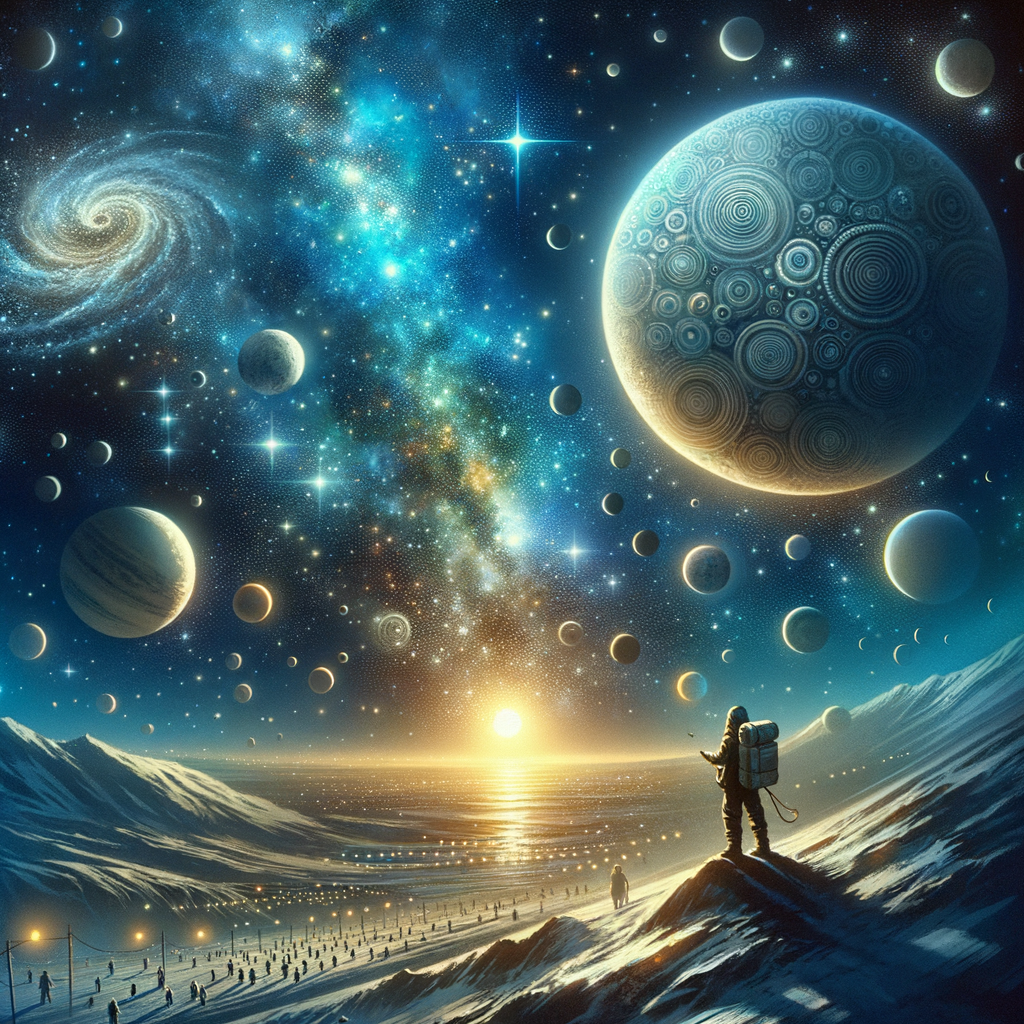Have you ever gazed up at the night sky and wondered if someone, or something, is gazing back? The idea of alien life has fascinated humanity for centuries, inspiring countless books, movies, and scientific inquiries. As our technology advances, so does our ability to explore the cosmos, bringing us ever closer to answering the age-old question: Are we alone in the universe? Join us on a whimsical journey through the stars as we explore planets that could very well be the homes of extraterrestrial beings!

Unveiling Alien Abodes: Planets Beyond Our Wildest Dreams
Imagine a planet where the skies shimmer with multiple moons and the ground is carpeted with bioluminescent plants. Welcome to Kepler-186f, a real-life exoplanet that has captured the imaginations of scientists and dreamers alike. Located some 500 light-years away in the constellation Cygnus, Kepler-186f is the first Earth-sized planet found in the habitable zone of its star. This “Goldilocks” zone is just right for the existence of liquid water, an essential ingredient for life as we know it. With its striking similarities to Earth, Kepler-186f could be a prime candidate for an alien abode—perhaps even one teeming with life forms that glow in the dark!
Next on our cosmic tour is Proxima Centauri b, the closest known exoplanet to our solar system. Orbiting the red dwarf star Proxima Centauri, this planet lies a mere 4.24 light-years away. While it might not sound like a neighborly distance, it’s practically in our backyard in galactic terms! Scientists are particularly excited about Proxima Centauri b because it resides in its star’s habitable zone. Though the planet’s environment might be harsh and exposure to stellar flares high, it’s fascinating to imagine resilient alien species adept at thriving in such conditions. Could alien cities be hidden beneath its surface, shielded from the elements?
And then there’s the enigmatic world of TRAPPIST-1e, one of the seven Earth-sized planets orbiting the ultra-cool dwarf star TRAPPIST-1. This system, located about 39 light-years away, boasts an array of planets that offer tantalizing clues about the potential for life. TRAPPIST-1e stands out due to its position within the habitable zone, where conditions might allow liquid water to exist. Imagine a civilization that has developed a form of communication based on the varied light spectra of their star, a dazzling array of colors painting their skies as they converse in luminous patterns. The possibilities are as boundless as the universe itself!
Galactic Neighborhood: Where Extraterrestrial Life Might Thrive
Venturing further into our galactic neighborhood, we encounter the captivating world of LHS 1140b. This super-Earth, located 40 light-years away in the constellation Cetus, is about 1.4 times the size of our planet. What makes LHS 1140b particularly intriguing is its rocky composition and the potential presence of water. Orbiting within the habitable zone of its cool M-dwarf star, this planet has a thick atmosphere that might protect any life forms from harmful radiation. Picture a world where vibrant alien forests stretch across the planet, their foliage adapting to the unique light of their sun!
Another celestial gem is the gas giant HD 189733b, just 63 light-years away in the constellation Vulpecula. While gas giants are often considered inhospitable to life as we know it, scientists speculate that life could exist in their upper atmospheres. HD 189733b is particularly noteworthy because its atmosphere has been found to contain organic molecules. Imagine cloud cities suspended in the sky, inhabited by airborne creatures that drift on the planet’s strong winds, communicating through complex patterns of color and light. Who’s to say life couldn’t find a way, even in the most unexpected places?
Lastly, let’s not overlook the icy moon Europa, orbiting the gas giant Jupiter within our own solar system. Though not a planet, Europa’s subsurface ocean makes it one of the most promising candidates for extraterrestrial life. Beneath its thick ice crust, a vast ocean of liquid water exists, kept warm by tidal forces exerted by Jupiter’s gravity. This hidden ocean could serve as a haven for microbial life, or perhaps even more complex organisms. Imagine bioluminescent creatures navigating the dark, frigid waters, their glow illuminating a world completely different from our own—yet teeming with life nonetheless.
In the grand tapestry of the cosmos, it seems increasingly possible that we are not alone. The planets and moons we’ve explored today offer a mere glimpse into the myriad of possibilities that await our discovery. Each celestial body holds its secrets, potentially harboring life forms that challenge our understanding of biology and existence. As we continue to unravel the mysteries of the universe, one thing is certain: the quest to find alien life will keep our imaginations soaring among the stars. So, next time you look up at the night sky, remember that somewhere out there, an alien home might be waiting to be discovered!









